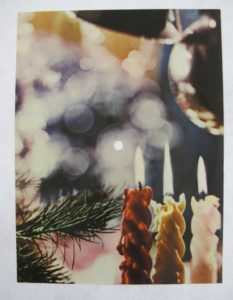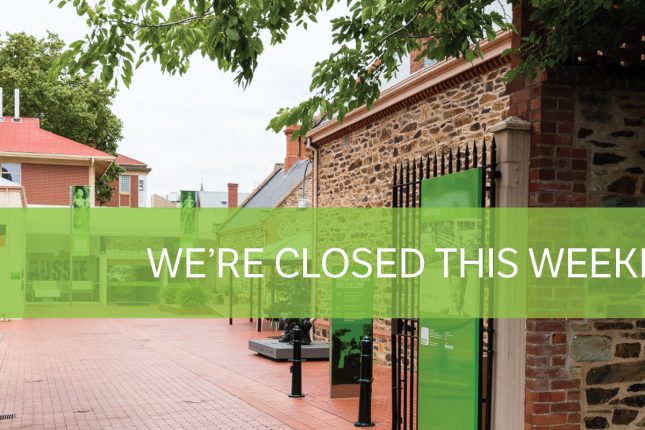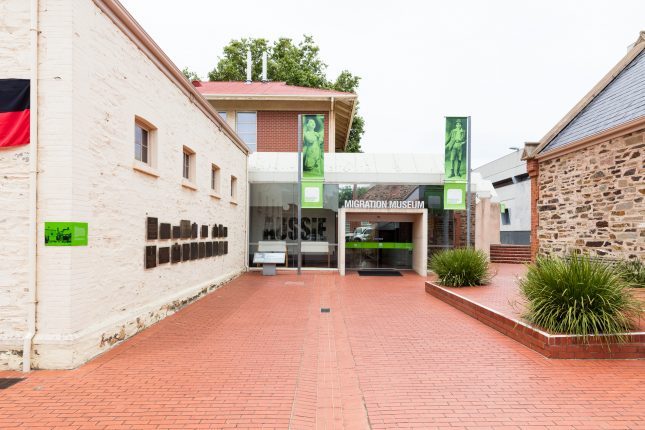Sending Season’s Greetings
Written by Corinne Ball | December 17th, 2015
Curator Nikki tells us about a seasonal phenomenon – the Christmas card!
It’s that time of year again when people in many countries send season’s greeting to their friends and family members in the form of Christmas cards. While it is often said that the giving of Christmas cards is a tradition that was introduced by Queen Victoria, the first commercial card was commissioned in 1843 by Sir Henry Cole, an English businessman (and founder of the Victoria and Albert Museum in London) who was looking for a quick and easy way to send Christmas greetings to professional colleagues and acquaintances.
Cole’s friend, artist John Calcott Horsley, designed a triptych depicting three generations of a family raising a toast to the card’s recipient. The family is flanked on each side with scenes of charity in which food and clothing are given to the poor. The image was printed on a piece of stiff cardboard, at the top of which was the salutation, “TO:_____” allowing Cole to personalise the greeting. In 1846 the postcards sold for one shilling each. In 2001 one of these early postcards, sent by Cole to his grandmother, sold at auction for £22,500.
Since their inception Christmas cards have come in a range of designs. Early cards rarely contained the sorts of images that we now associate with Christmas, instead they depicted birds, flowers, animals, children, clowns, fairies, musical instruments, and even military figures. Pull tab cards and ‘pop-up’ cards were popular in the Victorian era, and seem to be enjoying a revival today.
Another interesting innovation is the phono card or ‘sound postcard’, early versions of which appeared in Germany and France in the first decade of the twentieth century. In 1954 Colorvox, a Hungarian company, began producing playable postcards for all occasions, including Christmas, and we are lucky enough to have two of these in our collection. Both depict typical European images of a wintry Christmas – fir trees, baubles, and winter sports (lake sledding is a popular activity on Hungary’s Lake Balaton).
The first card is pressed with a recording of Mozart’s The Magic Bell performed by the MRT Children’s Choir, while the other sound card has the track “Winter Sunshine” performed by Nikolics Fivérek and Club Együttes. Both cards have a hole at the centre which allows them to be placed on a record player and played at 45 RPM. The backs of the cards resemble a standard postcard with a space for a message, and another for the recipient’s address.
These beautiful cards were sent to a Hungarian migrant in Adelaide, by friends from home, and were treasured for decades before recently being donated to the Migration Museum by his daughter.
Migration Museum collection HT2014.70 and HT2014.71, donated by Mrs D Bloor

Christmas candles


 Show all
Show all Read this post
Read this post

 Visit
Visit